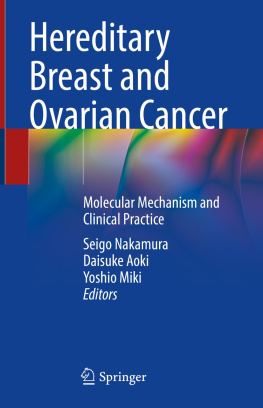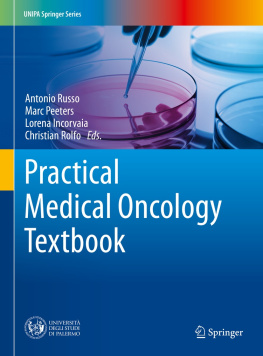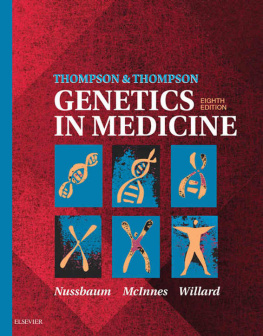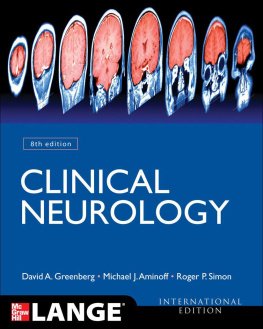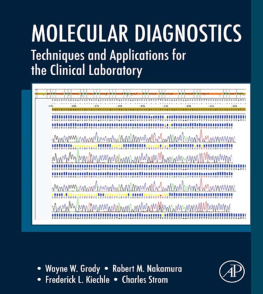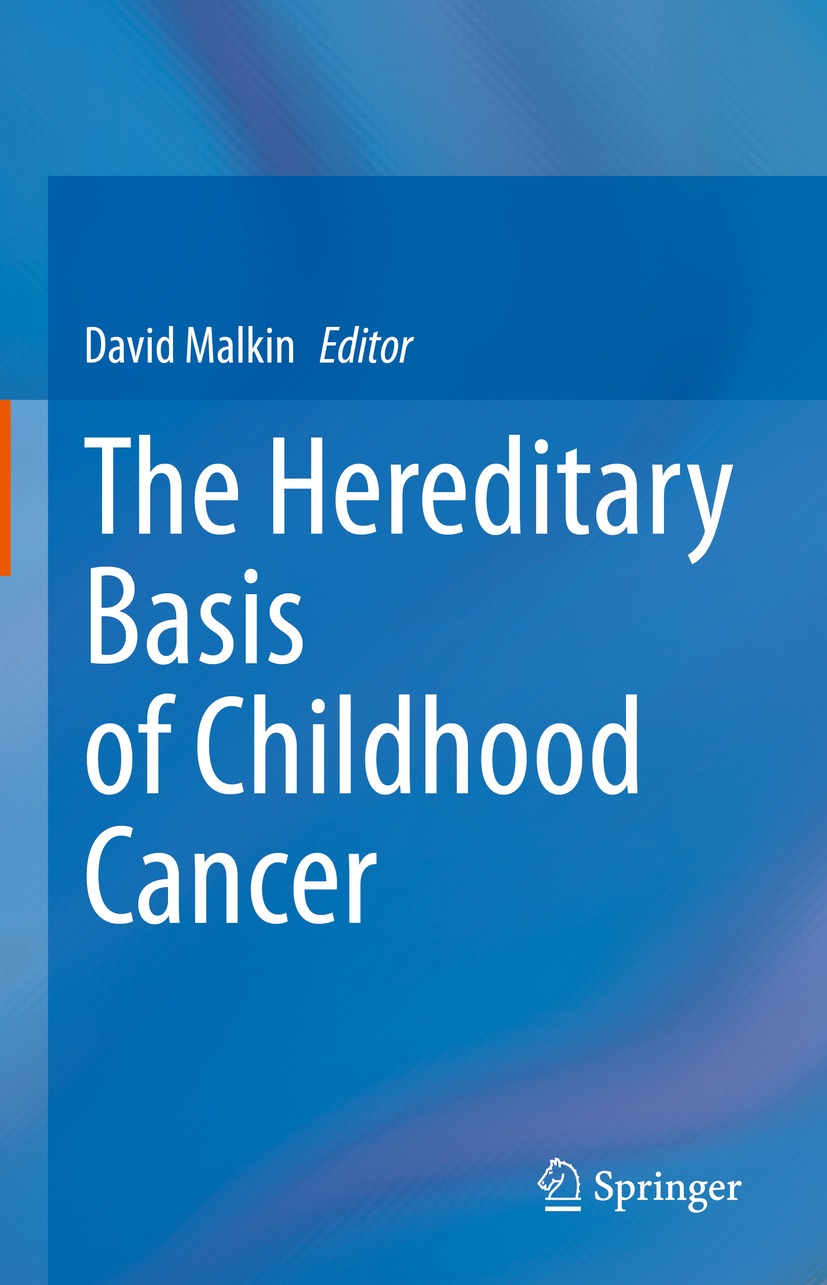The Hereditary Basis of Childhood Cancer
1st ed. 2021

Logo of the publisher
Editor
David Malkin
University of Toronto, Departments of Pediatrics and Medical Biophysics, The Hospital for Sick Children, Division of Hematology/Oncology, Toronto, ON, Canada
ISBN 978-3-030-74446-5 e-ISBN 978-3-030-74448-9
https://doi.org/10.1007/978-3-030-74448-9
The Editor(s) (if applicable) and The Author(s) under exclusive license to Springer Nature Switzerland AG 2021
This work is subject to copyright. All rights are reserved by the Publisher, whether the whole or part of the material is concerned, specifically the rights of translation, reprinting, reuse of illustrations, recitation, broadcasting, reproduction on microfilms or in any other physical way, and transmission or information storage and retrieval, electronic adaptation, computer software, or by similar or dissimilar methodology now known or hereafter developed.
The use of general descriptive names, registered names, trademarks, service marks, etc. in this publication does not imply, even in the absence of a specific statement, that such names are exempt from the relevant protective laws and regulations and therefore free for general use.
The publisher, the authors and the editors are safe to assume that the advice and information in this book are believed to be true and accurate at the date of publication. Neither the publisher nor the authors or the editors give a warranty, expressed or implied, with respect to the material contained herein or for any errors or omissions that may have been made. The publisher remains neutral with regard to jurisdictional claims in published maps and institutional affiliations.
This Springer imprint is published by the registered company Springer Nature Switzerland AG
The registered company address is: Gewerbestrasse 11, 6330 Cham, Switzerland
Dedicated to the Memory ofProfessor Thierry FrebourgPhysician, scientist, scholar, colleague, mentor, and great friend.
Preface
Cancer is the most common cause of disease-related death in children beyond the newborn period. In the absence of long-term exposure to exogenous factors that are commonly associated with adult-onset cancers, the role of genetic risk factors has been considered, at least conceptually, to play a more significant role in the etiology of childhood onset cancers. However, even the most comprehensive genome-wide sequencing efforts across multiple disease types has only revealed about 15% of children to harbor a germline pathogenic or likely pathogenic variant that their cancer can be attributed to. This frequency does vary widely depending on the particular cancer under question, as well as the depth and breadth of sequencing. Furthermore, this approach does not consider evolving technologies that are exploring alterations in non-coding regions, as well as emerging questions of the effect of polygenic risk. Nonetheless, it is clear that we now live in an exciting era of early twenty-first century medicine that applies new omics tools to cancer in general and pediatric cancer in particular, creates new platforms and devices to facilitate identification of risk prediction, educates patients, families, and health care practitioners about the importance of family history (and personal cancer history) in determining genetic risk, and integrates multi-disciplinary fields to the study of cancer genetics.
With this explosion of tools at our disposal to resolve the questions of the hereditary basis of childhood cancer more clearly, we envisioned an opportunity to develop a textbook that explores the field in more detail. This book was not intended to simply provide a descriptive listing of various cancer predisposition syndromes and the various genotypephenotype relationships. This has been done very effectively in many other textbooks. Rather, it is meant to provide the reader with an overview of the breadth of issues including the roles of genetic counseling (Chap. ).
The first several chapters of the textbook are divided into discussions of either individual hereditary cancer syndromes (Chaps. ). These are then followed by chapters as noted above that explore the medical and societal contexts in which these diseases are studied, evaluated, and medically managed. There is, necessarily, some overlap between certain chapters as the principles discussed frequently cross multiple clinical settings. At the same time, the style and content within each of the disease-associated chapters reflect the unique perspectives of the authors. As such, the presentation of concepts is written in a non-formulaic manner from chapter to chapter.
Ever since the pioneering work of Drs. Alfred Knudson, Louise Strong, Joseph Fraumeni, Frederick Li, and many others established the principles on which we now understand the importance of the genetic basis of cancer, the integration initially of gene-based sequencing, panel sequencing, and more recently next-generation sequencing has raised as many intriguing questions about genetic risk as it has provided answers. There can be no doubt that our understanding of the field will continue to rapidly evolve, which will lead to ever more effective approaches to the medical and psychosocial management of our patients. The genetic basis of human cancer has always been deeply rooted in discoveries made in the rare pediatric cancer setting. As such, this textbook is timely in summarizing the many important lessons that have been learnedand offering some insight into directions that new research questions will take us.
I take this opportunity to thank all the authors for their dedication to their work and for sharing their insights to create this textbook. The breadth of expertise that has been gathered here, representing an international scope of practice and scientific thought, is truly remarkable. I am sure that as soon as this book hits the shelves, we will be engaged in updating it for another edition. For even now as this Preface is written, new discoveries continue to emerge, practice guidelines change, and the future continues to evolve.
David Malkin
Toronto, ON, Canada
July 2021
Contents
Anita Villani , Thierry Frebourg and David Malkin
Anirban Das and Uri Tabori
Jaclyn A. Biegel and Jacquelyn J. Roth
D. Gareth R. Evans
Mercedes Robledo , Maria Currs and Alberto Cascn
Joyce T. Turner , Leslie A. Doros and Jeffrey S. Dome
Jack Brzezinski , Cheryl Shuman and Rosanna Weksberg
Rebekah K. Jobling and Jonathan D. Wasserman
William D. Foulkes , Leanne de Kock and John R. Priest
Sharon A. Savage , Lisa J. McReynolds , Marena R. Niewisch , Burak Altintas , D. Matthew Gianferante and Blanche P. Alter
Jennie Vagher , Luke Maese , Amanda Gammon , Wendy Kohlmann and Joshua D. Schiffman
Maria Isabel Achatz , Patricia Ashton Prolla , Hany Ariffin and Pierre Hainaut
Michael J. S. Beauvais , Karine Sncal , Conrad V. Fernandez , Daniel Sinnett , Vasiliki Rahimzadeh and Bartha Maria Knoppers
Jaclyn Schienda , Carly Grant , Sharon E. Plon and Katherine A. Schneider


